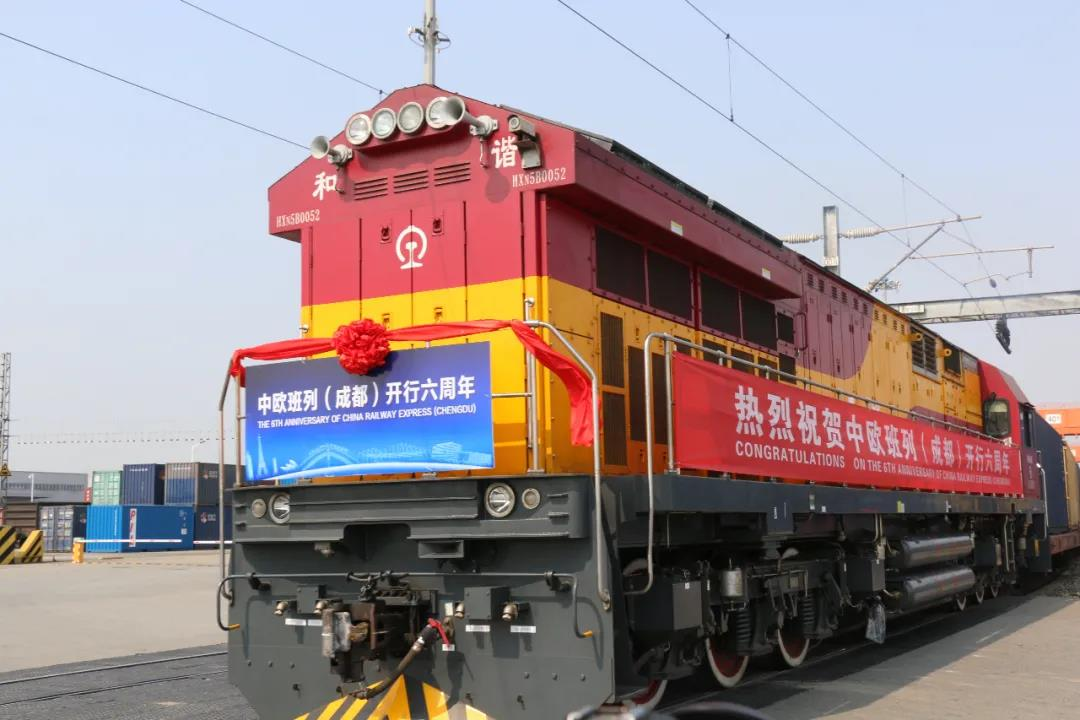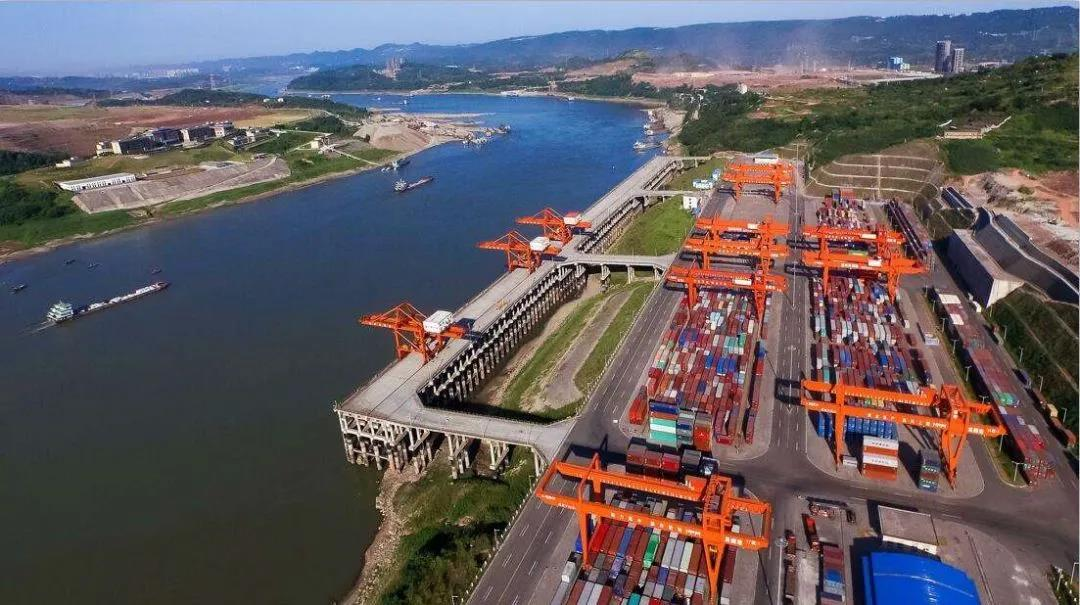On March 19, 2011, the first China-Europe freight train departed from Chongqing, and it has been more than ten years now. In the past ten years, China-Europe freight trains have gradually expanded in breadth and depth, but how to solve the problem that operations rely heavily on local financial subsidies has always been a major issue. However, since last year, due to the impact of the epidemic on air-shipping and shipping, the China-Europe freight train has achieved a contrarian development. Therefore, whether it can get rid of subsidies after rapid growth, find a suitable business model, and achieve market-oriented transformation has become the next issue for China Railway Express.

Strong Growth: China-Europe Railway Express Ushers in Historical Opportunities
For more than ten years, the number of China-Europe freight trains has been steadily increasing, and the proportion of the value of goods transported in China-Europe goods trade has also increased from 1% in 2015 to 7% in 2020. Since the outbreak of COVID-19, China-Europe freight trains have shipped a total of 11.99 million pieces and 94,000 tons of anti-epidemic materials to Europe, which is great strategic . At the same time, China Railway Express will achieve growth against the trend in 2020. In the whole year, 12,400 lines were opened and 1.135 million TEUs were sent, an increase of 50% and 56% year-on-year
respectively. The number of lines opened in the year exceeded 10,000 lines for the first time.
In the first half of this year, China-Europe freight trains continued to develop strongly. The number of trains and the number of containers shipped increased by 43% and 52% year-on-year respectively, and the number of trains opened in a single month exceeded 1,000. In China, 29 provinces, autonomous regions and municipalities have opened China-Europe freight trains; overseas, China-Europe freight trains reach different parts of the Eurasian continent such as the European Union and Russia.
In the international trade system, the fast air freight and the low freight sea freight ,they have long been in the leading position in transportation, and the railway transportation in the middle has not received much attention. However, under the impact of the epidemic, air and sea freight have experienced large-scale delays and cancellations, and the capacity of the two modes of transportation is seriously insufficient. With transporting anti-epidemic materials and the subsequent resumption of work and production, a large demand of transportation has accumulated, and the China-Europe freight train has ushered in a historical opportunity.
"The comparative advantage of the China-Europe freight train is outstanding, because its price is cheaper than air freight, and the time is at least 1/3 shorter than sea freight. For example, the sea-rail combined transportation channel in the southwest of China is very typical. We used to think that Yunnan, Guizhou and Sichuan were the hinterland. through the freight railway and the northern port, these region can reach Southeast Asia, South Korea and Japan, etc., and superimpose with the RCEP that is expected to take effect at the end of this year." Railway expert, Tongji University professor Sun Zhang said in an interview with a reporter from Beijing Business Daily, The profit model of container technology and time preference makes the China-Europe freight train feasible.
Taking Chongqing to Duisburg as an example, it takes about 15 days for a one-way train between China and Europe, and about a month for sea freight. A reporter from the Beijing Business Daily has previously learned that if it is a ship that needs to be transited, the shipping needs to add about an additional month of demurrage at present. Shipping containers are also facing the dilemma of hard to find a box, and the price of containers has soared to 2-3 times before. The disadvantage of shipping speed is intensified, and the price advantage is weakened

However, after the gradual recovery of air and sea freight, Can China-Europe freight trains continue to remain competitive? In Sun Zhang's view, in the post-epidemic period, the China Railway Express still maintains strong competitiveness: "For China, the gap between the east and the west will narrow, and now the southwest is also a port, and Xinjiang is also a port, which will help improve resources ,unbalanced distribution. Internationally, the China Railway Express is very popular with Germany, France, Spain and other countries, and this comparative advantage always exists. Although the growth rate will not be the same as during the epidemic, it will continue to develop rapidly. This role is irreplaceable."
Future Trends: A Preliminary Probe into Market-Based Reforms。
The China-Europe freight train is developing rapidly, but it also has problems that cannot be avoided. For example, in the early stage of construction, some cities invested heavily, which led to the problem of "empty boxes". And market-oriented operation is the key to avoiding "empty boxes". With the implementation of relevant policies and the gradual enrichment of the supply of goods, the comprehensive rate of containers with goods on the China-Europe freight train (the proportion of containers with loaded goods) has reached 98.4%.
In addition, subsidies from various regions on which China Railway Express relies heavily are also gradually declining. On May 26, with the long sound of the train whistle, Baoding's first China-Europe train with zero subsidy and normal operation - the 75054 China-Europe train (Baoding-Moscow-Minsk) operated by Taitong International was fully loaded with goods. Slowly depart from Jingxiongbao International Smart Port in Baoding City and head for Minsk, the capital of Belarus
The National Development and Reform Commission issued a document in June last year, stating that in the future, China-Europe Railway Express will vigorously promote mechanism-innovation, model-innovation, rule-innovation, and technological -innovation, further stimulate the market vitality and creativity of China-Europe Railway Express, and promote the integration of the train and the economy and society. developing.
In fact, in terms of market-oriented reform, Zhejiang and other places have accumulated a certain amount of exploration experience. The "Yi-Xin-Ou" from Yiwu, Zhejiang is the first China-Europe train operated by a private enterprise in China. This is not unrelated to the continuous supply of foreign trade goods in Yiwu, the "world's largest small commodity distribution center". On June 16, the "Yi-Xin-Europe" China-Europe train reached 1,000 this year, 4 months earlier than last year. What is even more eye-catching is that this year's Yiwu return train box volume has increased by 48.9 times.
It is worth mentioning that the return rate is an important indicator of the China Railway Express. The low return rate is also a problem faced by China-Europe trains for a long time. In the first half of this year, China National Railway Group Co., Ltd. improved the operation process by optimizing the supply of goods, containers, vehicles, and labor organization, and the return trip rate reached 85%.
This is also the highest level in the history of the return journey of the China Railway Express. From the perspective of the types of goods transported by China-Europe freight trains have expanded from electronic products such as notebook computers to more than 50,000 product types such as auto parts and vehicles, chemicals, mechanical equipment, e-commerce parcels, and medical equipment. The annual freight value of the trains has increased from US$8 billion in 2016 to nearly US$56 billion in 2020, an increase of nearly 7 times.
In an interview with a reporter from Beijing Business Daily, Cao Heping, a professor of industrial economics at Peking University, pointed out: "Some of these lines are relatively profitable, but there are also a few lines, such as the 'China-Bangladesh-India' line, because of ethnicity, culture , the political and economic situation is divided, construction became difficult. Therefore, the China Railway Express should choose a more optimized path in the future.”
